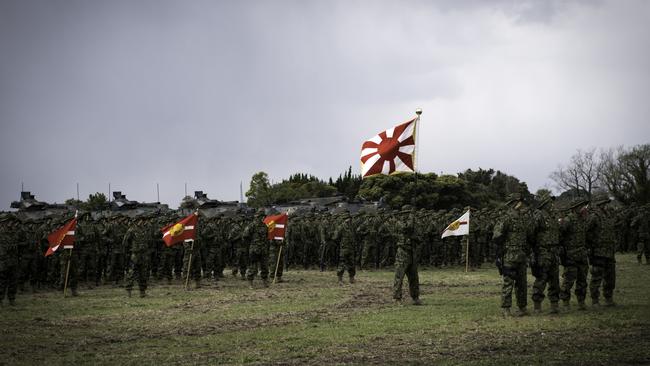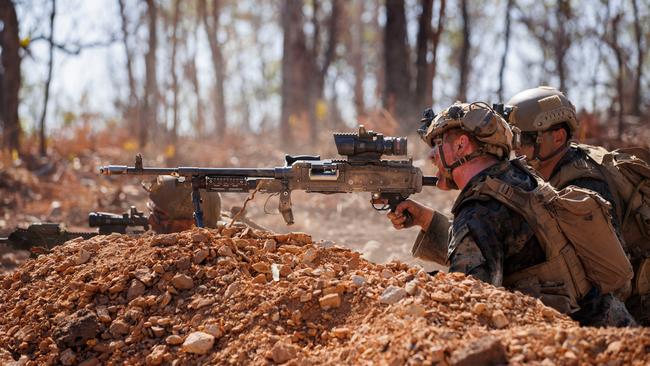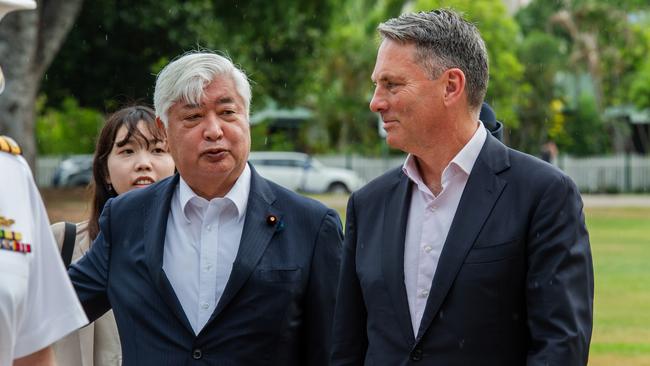What Japan’s Amphibious Rapid Deployment Brigade can bring to Darwin
Australian soldiers and US Marines will soon have new mates to storm the beaches and bush with. Here’s what we know about the Japanese marines deploying to Darwin.

News
Don't miss out on the headlines from News. Followed categories will be added to My News.
Boasting amphibious vehicles, heavy mortars, and V-22 Ospreys, the Japanese marines moving into Darwin have plenty of toys and tactics they could potentially share with their Australian and US counterparts.
At HMAS Coonawarra on Sunday, Japanese Defense Minister Gen Nakatani announced Japan’s Amphibious Rapid Deployment Brigade would rotate through the Top End from 2025, making Japan’s military the second largest foreign force operating on Australian soil - after the US.
The Japanese marines will deploy a regiment-sized force - around 600 troops - for Exercise Talisman-Sabre years, and a company of troops - around 100 men - otherwise.
A highly-specialised naval unit, the ARDB was established in 2018 with a view to improve the Japanese Ground Self-Defense Forces’ ability to operate in remote maritime regions.

While it is yet to be confirmed what Japan’s force composition will be when it rotates through Darwin, the ARDB’s assets offers formation commanders in the Territory greater firepower in the field environment.
The brigade consists of three light infantry regiments, engineers, a logistics unit and even its own artillery battalion, which can field 120mm heavy mortars - common hallmarks of an amphibious outfit tasked to fight and survive on its own for prolonged periods of time.
Like their US counterparts, the Japanese marines also conduct airmobile operations from V-22 Ospreys.

In recent years, Darwin’s 1st Brigade has been restructured to resemble an amphibious fighting force of its own, with units across the brigade spending as much time on the water as it does in the bush.
The highly anticipated arrival of the ARDB combined with 1st Brigade’s warfighting transformation underscores Canberra’s vision to base an amphibious fighting force in northern Australia, in line with the Defence Strategic Review.
At the same press conference the Japanese move was announced, US defense secretary Lloyd Austin answered an unrelated question concerning North Korea deploying troops to Ukraine in support of the Kremlin.

Mr Austin cited language and interoperability as the major “friction” points likely to be encountered by DPRK troops.
“Based upon a language barrier, based upon a lack of common procedures, lack of common equipment, you would expect that there will be some friction in terms of how effective they’ll be.”
The same concerns could also apply to Japan’s integration with Australia, which will be seek to become a formidable partnership.
On Monday morning Solomon MP Luke Gosling addressed 50 senior ADF officers in light of the announcement.
While the NT News was not privy to the event, Mr Gosling said he used the opportunity to stress the “great” development.
“The US-Japan-Australia Trilateral meeting here in Darwin shows the importance of our northern capital to our nation and our partners,” he told the NT News.
“We’ll continue to build relationships with like-minded partners with whom we share values and democracy.
“I’m proud that the Territory is playing a key role in strengthening our relationships in the Indo-Pacific.”
More Coverage
Originally published as What Japan’s Amphibious Rapid Deployment Brigade can bring to Darwin





